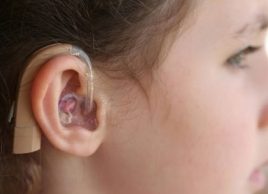Hearing Loss
At first, you have trouble hearing high-pitched sounds, then later, lower-pitched sounds.

Source: Adapted from Looking After Your Body: An Owner’s Guide to Successful Aging, Reader’s Digest
What is hearing loss?
At first, you have trouble hearing high-pitched sounds, then later, lower-pitched sounds. Hearing loss occurs as the tiny hair cells that act as sound receptors in your inner ear are gradually destroyed. Associated factors include repeated exposure to loud noises, heredity, and changes in the blood supply to the ear caused by heart disease or other circulatory problems. Presbycusis affects both ears equally but doesn’t lead to total deafness. It occurs earlier in men than in women.
A sign of hearing loss, tinnitus is identified by a ringing, roaring, or hissing sound in your ears. It can be constant, frequent, or occasional. If you’ve experienced it (or any other sign of hearing loss), see your doctor. If your hearing loss is accompanied by pain or discharge from your ear, see your doctor; you may have an ear infection.
Who is at risk for hearing loss?
Age-related hearing loss, or presbycusis, affects about one-third of North Americans between age 65 and 74, and one-half of those over age 85. This progressive problem actually starts around age 20, then accelerates after age 50.
Treatment for hearing loss
Your doctor will prescribe a hearing aid or suggest other assistive devices. A hearing aid is made up of a microphone, which changes sound waves into electrical signals; an amplifier, which makes the signals louder; a receiver, which changes the electrical signals back into sound waves and channels them into your ear; and a battery. Keep your expectations in check: A hearing aid won’t bring your hearing back to normal. But it will certainly improve it. Don’t feel discouraged if yours isn’t working the way you want it to at first. Make regular appointments with your audiologist until it feels right to you.
Different types of hearing aids include:
- Behind-the-Ear (BTE). In this device, the microphone is located at the opening of your ear, while the battery, amplifier, and receiver are tucked behind. It works well for all degrees of hearing loss. If your earpiece doesn’t fit properly or is damaged, the device will start squealing, so have the mold remade periodically.
- In-the-Ear (ITE). Made of a hard plastic, this fits completely in the outer ear. It’s appealing because it’s hidden and simulates natural sound reception, but it can become clogged with ear wax and need cleaning, and the volume is more difficult to adjust.
- In-the-Canal (ITC). While similar to the ITE, this device is so small it actually fits in your ear canal. It’s used only in cases of mild hearing loss and needs to be repaired more often than other devices because of where it’s worn. Good manual dexterity is required to insert it.
- Body-Style. Worn on your body and attached to an earpiece, this device provides powerful amplification. The controls are easy to use, but because the microphone isn’t at ear level, the sound reception isn’t natural. And because it’s generally worn under clothing, the microphone will also pick up the sound of rustling fabric whenever you move.
Lifestyle Changes
Other assistive devices for hearing loss can be purchased through your audiologist or a medical supply store. They include:
- Amplifying devices used for watching TV or listening to the radio. An amplifier transmits sound to headphones that you wear. You can adjust your own volume without interfering with other people’s hearing of the TV or radio. These devices are also available for telephones.
- Alerting devices that use loud noises, flashing lights, or a vibrator to alert you to certain sounds. They can be used with your telephone, doorbell, alarm clock, smoke detector, or anything else you need to hear. You can attach them to the specific appliance or to your bed or a chair. Many are portable so you can use them away from home.
- Decoding devices such as closed-captioning devices you can hook up to your TV, which convert audio transmission into text that appears onscreen, and teletypewriters (TTYs), specialized telephone systems that convert audio signals into text that is displayed on a monitor.
Prevention of hearing loss
- Cut down on salt. Reducing your salt intake may help improve hearing. Salt causes the body to retain fluid, which may swell the functional organs of the ear. Canned soups and other processed foods often contain large of amounts of salt, so read labels.
- Now hear this. If you suspect hearing loss or your loved ones have hinted at it, schedule a checkup with an otolaryngologist, a doctor who specializes in diseases of the ears, nose, and throat. If you are over age 65, you may want to have an audiologist test your hearing every 3 years—or every 6 to 12 months if you have a family history of hearing loss.
- Go with ginkgo. By improving blood flow to the brain and the ears, this herb may help ringing in the ears (tinnitus), though noticeable benefits may take weeks or months of use. Some studies suggest ginkgo may be useful in treating some types of hearing loss. Take up to 240 mg of the extract a day, but check with your doctor first, since ginkgo can interact with other drugs.
- Tune out. Try to avoid situations that expose you to loud noise. If that’s not possible, wear earplugs or ear protectors when shooting a gun or using lawn mowers, other noisy garden equipment, or power carpentry tools.




